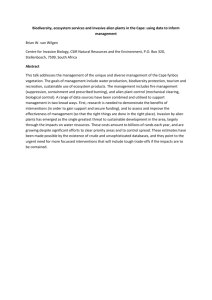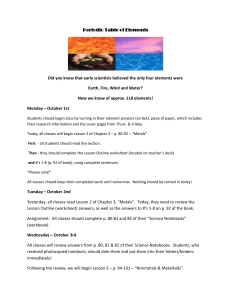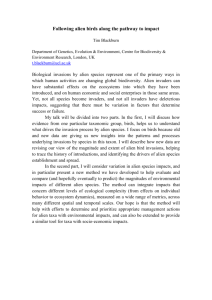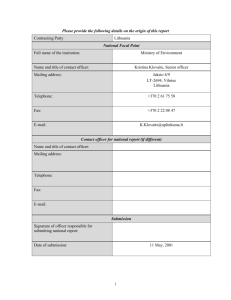Theme: Invasion biology
advertisement
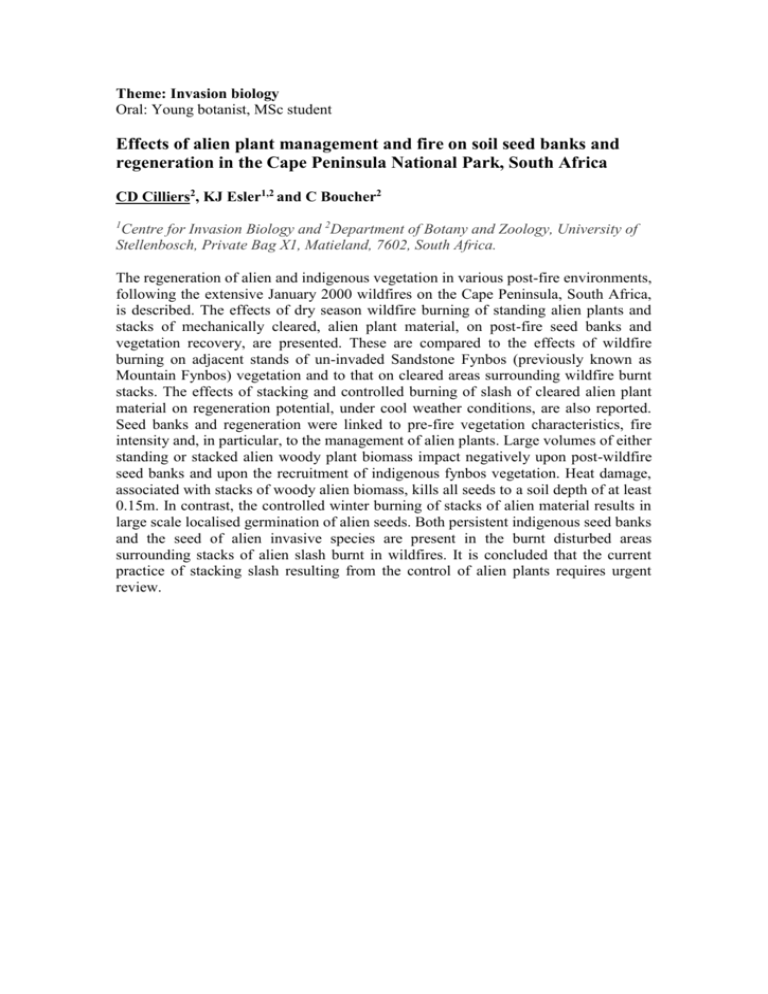
Theme: Invasion biology Oral: Young botanist, MSc student Effects of alien plant management and fire on soil seed banks and regeneration in the Cape Peninsula National Park, South Africa CD Cilliers2, KJ Esler1,2 and C Boucher2 1 Centre for Invasion Biology and 2Department of Botany and Zoology, University of Stellenbosch, Private Bag X1, Matieland, 7602, South Africa. The regeneration of alien and indigenous vegetation in various post-fire environments, following the extensive January 2000 wildfires on the Cape Peninsula, South Africa, is described. The effects of dry season wildfire burning of standing alien plants and stacks of mechanically cleared, alien plant material, on post-fire seed banks and vegetation recovery, are presented. These are compared to the effects of wildfire burning on adjacent stands of un-invaded Sandstone Fynbos (previously known as Mountain Fynbos) vegetation and to that on cleared areas surrounding wildfire burnt stacks. The effects of stacking and controlled burning of slash of cleared alien plant material on regeneration potential, under cool weather conditions, are also reported. Seed banks and regeneration were linked to pre-fire vegetation characteristics, fire intensity and, in particular, to the management of alien plants. Large volumes of either standing or stacked alien woody plant biomass impact negatively upon post-wildfire seed banks and upon the recruitment of indigenous fynbos vegetation. Heat damage, associated with stacks of woody alien biomass, kills all seeds to a soil depth of at least 0.15m. In contrast, the controlled winter burning of stacks of alien material results in large scale localised germination of alien seeds. Both persistent indigenous seed banks and the seed of alien invasive species are present in the burnt disturbed areas surrounding stacks of alien slash burnt in wildfires. It is concluded that the current practice of stacking slash resulting from the control of alien plants requires urgent review.
